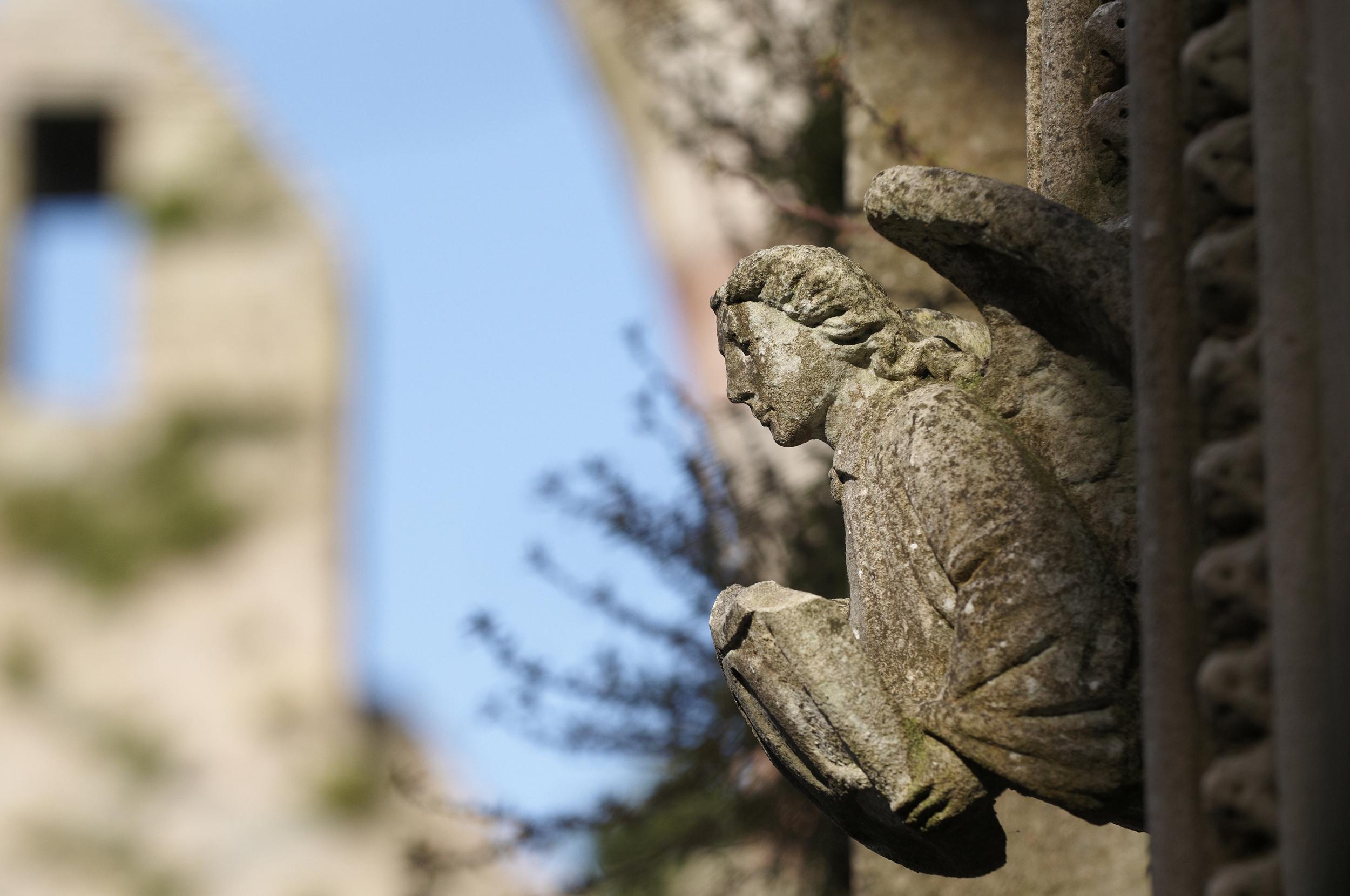Nendrum Monastic Site
Mahee Island, County Down
The best example in Northern Ireland of a pre Norman monastic enclosure.

Along with Inch Abbey, Greyabbey is the best example of Anglo-Norman Cistercian architecture in Ulster and was the daughter house of Holm Cultram in Cumbria.
Greyabbey, County Down
It was founded in 1193 by Affreca, wife of John de Courcy, the Anglo-Norman invader of East Ulster.
The site of the abbey was on the Ards Peninsula, 7 miles (11 km) from Newtownards, at the confluence of a small river and Strangford Lough. Architecturally it is important as the first fully gothic style building in Ulster; it is the first fully stone church in which every window arch and door was pointed rather than round headed. The abbey is located in the parkland of Rosemount House, home of the Montgomery family, to the east side of the village.
Tradition says that Affreca founded the abbey in thanksgiving for a safe landing after a perilous journey at sea. The abbey was colonised with monks from Holmcultram in Cumbria, with which it maintained close ties in the early years. The construction of the stone church began almost immediately. In 1222 and again in 1237 abbots of Grey Abbey went on to become abbots of Holmcultram. The Latin name of the abbey is Iugum Dei, which means 'Yoke of God'. Little is known of the abbey's history, though it appears to have been almost completely destroyed during the invasion of Edward Bruce (1315–18).
No reliable sources concerning the value of the abbey foundation survive, but it is not likely to have been prosperous. The abbey was dissolved in 1541. In the same year part of the monastic property was granted to Gerald, earl of Kildare. The monastery was physically destroyed during the military operations of the Elizabethan era. In 1572, Brian O'Neill burnt Grey Abbey in order to stop it being used as a refuge for English colonists trying to settle in the Ards Peninsula. In the 17th century the church nave was re-roofed and served as a parish church until 1778.
The remains, in the beautiful parkland setting of the nearby grand house of Rosemount, consist of the church with cloister and surrounding buildings to the south.
Mahee Island, County Down
The best example in Northern Ireland of a pre Norman monastic enclosure.
Killinchy, County Down
Killinchy Parish Church boasts the Livingston Centre, a local is a local heritage centre which celebrates the transatlantic story of the Livingston family.
Newtownards, County Down
St Patrick’s is situated at the gateway to the Ards Peninsula in Newtownards and built in 1877 by Lady Londonderry.